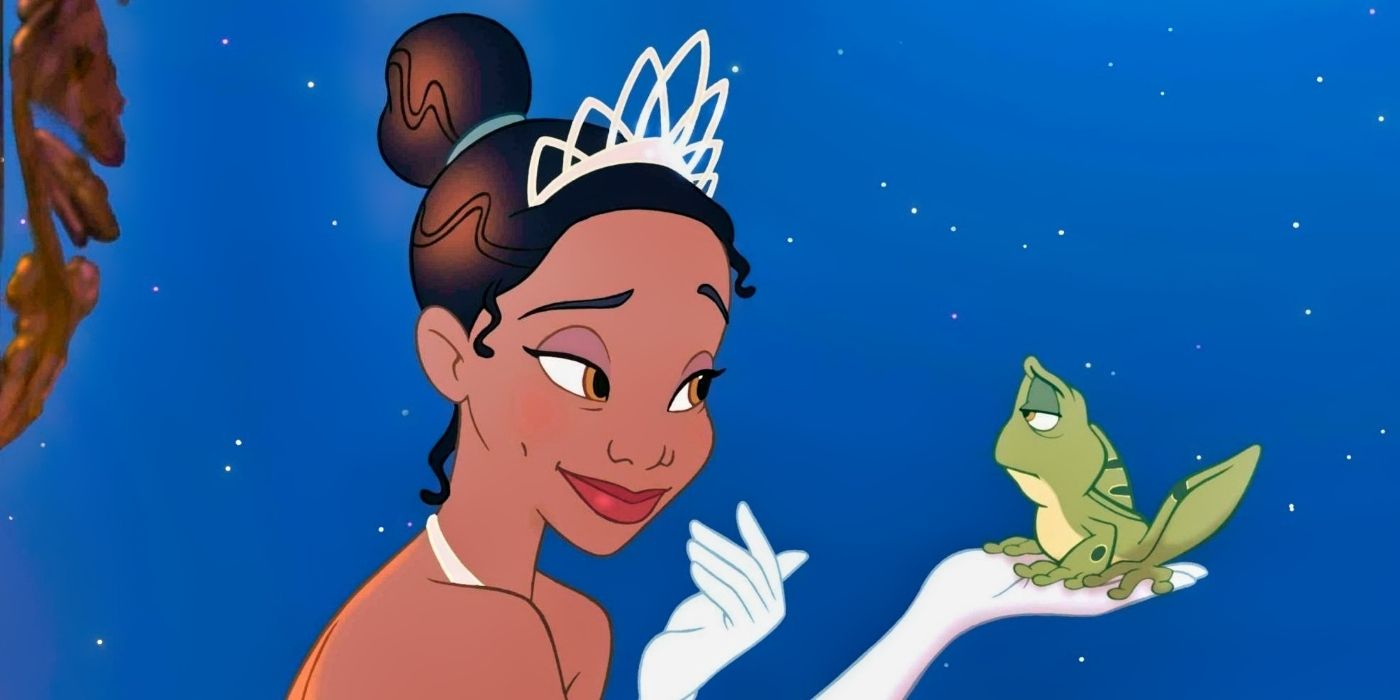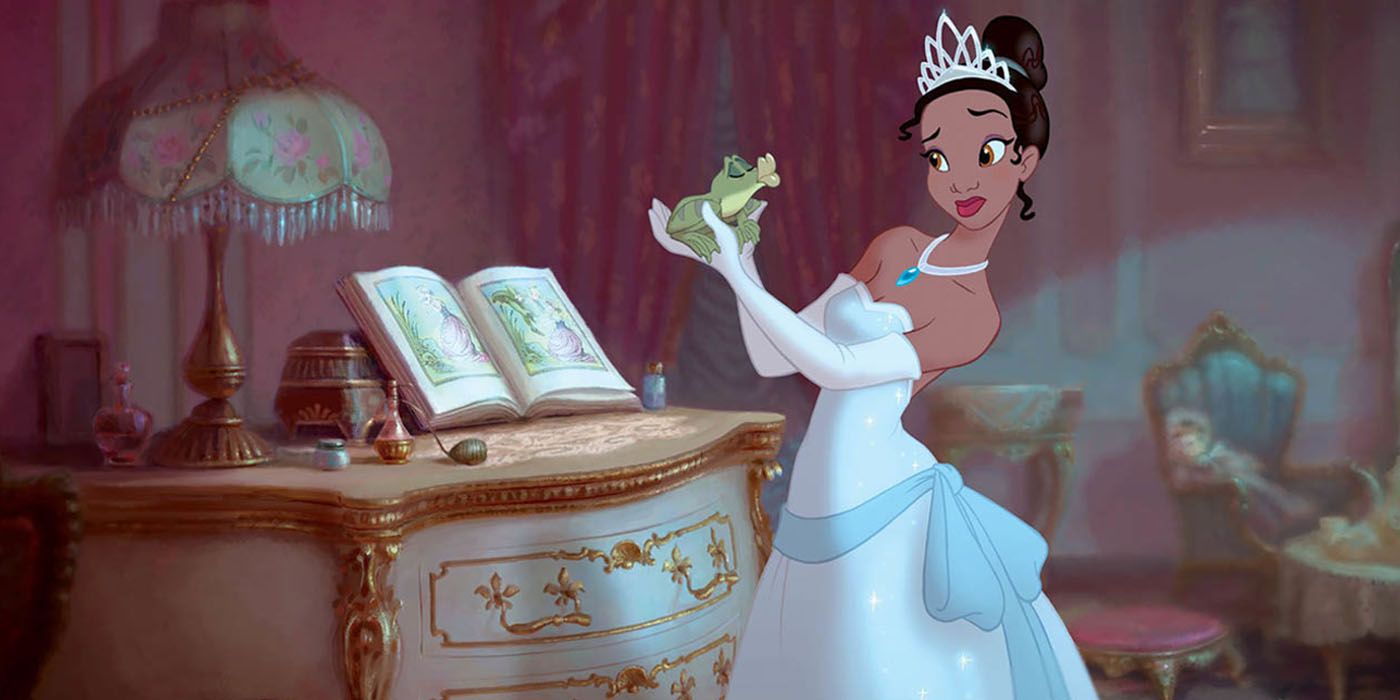How did The Princess And The Frog herald the end of Disney’s hand-drawn animation era? Once upon a time, Disney was synonymous with hand-drawn animation. From classics of yesteryear like Snow White And The Seven Dwarfs to Disney Renaissance movies like The Little Mermaid or The Lion King, some of the company’s best-loved films have been hand-drawn efforts. Nowadays, however, Disney has switched its focus from hand-drawn movies to computer-animated titles like Moana and the Frozen franchise.
Disney’s move to CGI isn’t an entirely new phenomenon. By the mid-2000s, the House of Mouse was already dabbling in digital animation with films like Chicken Little after several hand-drawn Disney features including Treasure Planet and Home On The Range proved to be flops. Meanwhile, studios like Pixar and DreamWorks were enjoying critical and commercial success with computer-animated movies like Finding Nemo or Shrek. All those elements combined forced Disney to consider whether hand-drawn animation was becoming a dying art.
Nevertheless, Disney wasn’t quite ready to give up on traditional animation. In 2009, the company attempted to revive the medium with The Princess And The Frog which was the first hand-drawn feature Disney had produced since 2004’s Home On The Range. The film was co-directed by Ron Clements and John Musker (the same duo behind traditionally-animated favorites like The Little Mermaid and Aladdin) and tells the charming tale of a young New Orleans waitress named Tiana who dreams of opening a restaurant, but gets turned into a frog after a run-in with a voodoo-cursed amphibian prince. The underrated Princess And The Frog earned rave reviews from critics and went on to receive an Academy Award nomination for Best Animated Feature, but it still signaled the end of Disney’s hand-drawn animation days.
The main reason why is that Disney felt The Princess And The Frog underperformed commercially compared to their expectations. While it grossed a very respectable $271 million against its $105 million budget, the film didn’t make anywhere near as much as older hand-drawn hits like The Lion King nor did it ignite the box office like its contemporary CGI counterparts did. In an interview with Variety, John Lasseter (the then-CCO of Walt Disney Animation Studios) stated The Princess And The Frog’s lack of success led Disney to conclude that hand-drawn animation “was viewed as old-fashioned by the audience.” Add to that the fact computer-generated animation was both cheaper and less time-consuming to produce, and Disney made the decision to switch to CGI.
That said, Disney hasn’t entirely abandoned the hand-drawn medium. While The Princess And The Frog was its last major hand-drawn animation, Disney has since produced other traditionally-animated smaller features like Winnie The Pooh and short films including The Ballad Of Nessie. However, it’s safe to say the heyday of hand-drawn Disney films came to an end with The Princess And The Frog.


